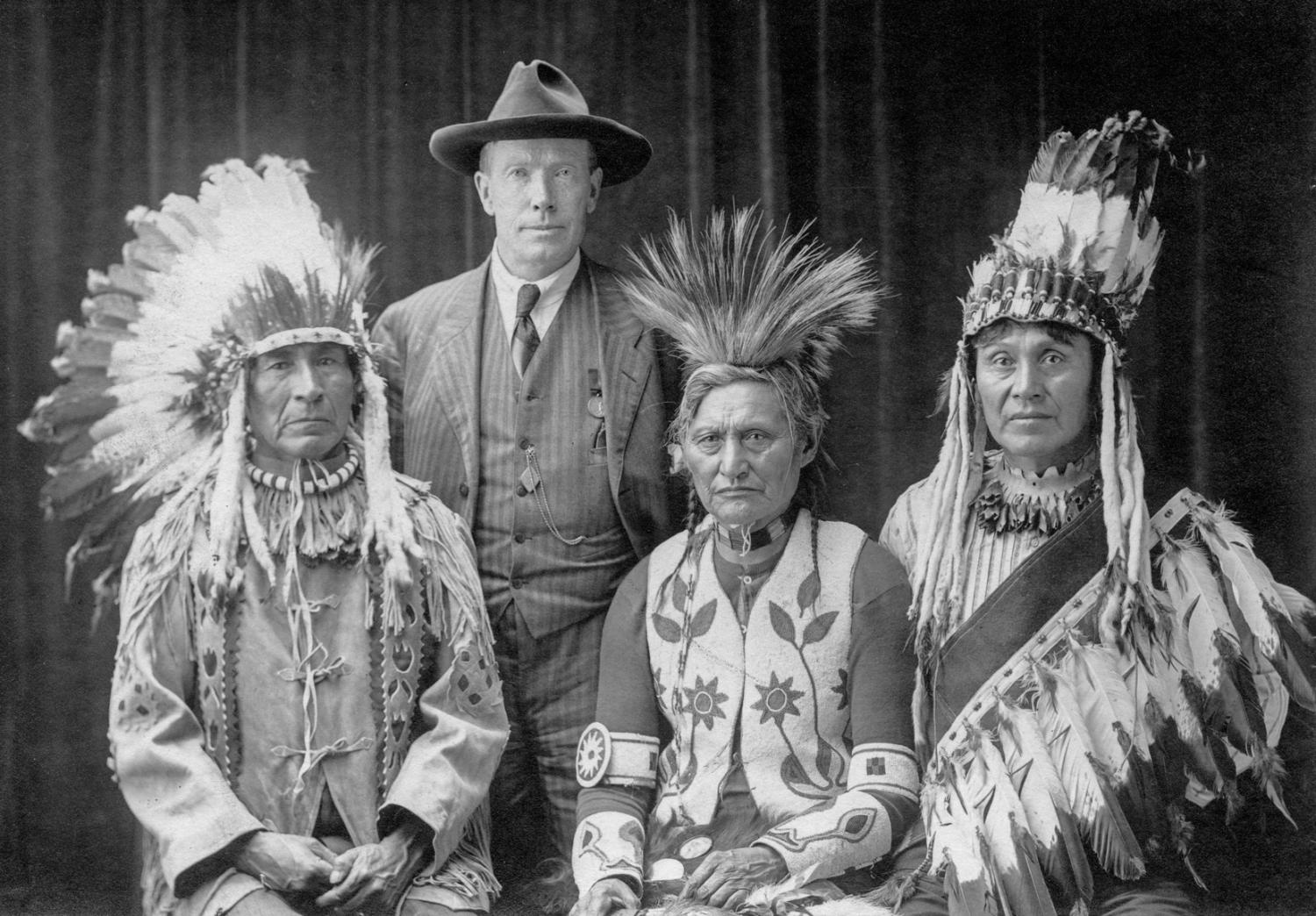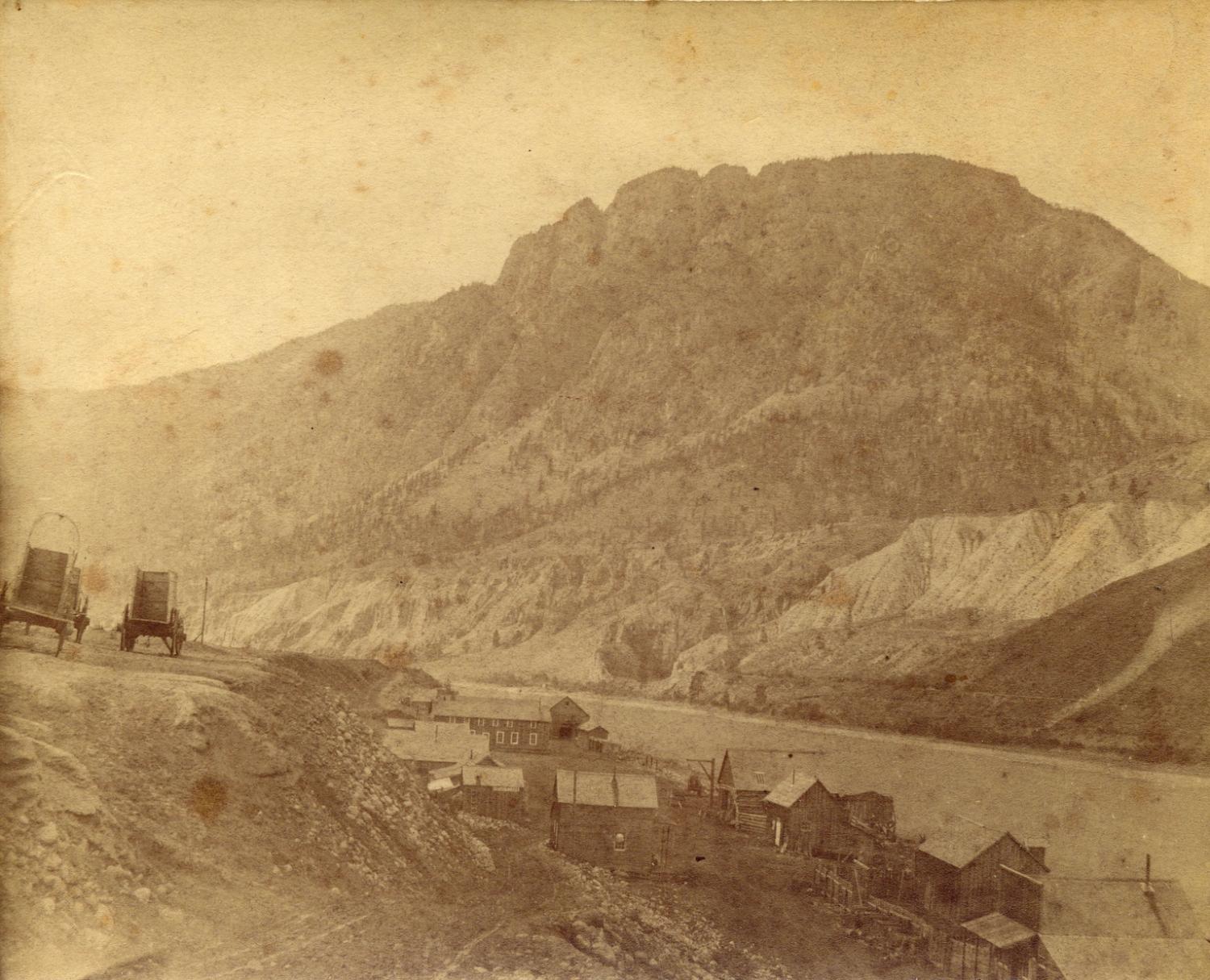James Teit
An amateur ethnographer becomes a passionate early advocate for Indigenous rights
Date: 1884
“Every once in a while, an important figure makes an appearance, makes a difference, and then disappears from the public record,” writes Wendy Wickwire, a historian at the University of Victoria. “James Teit was such a figure.”
Born in the Shetland Islands in Scotland, a 19-year-old Teit came to B.C. in 1884 to work for his uncle in Spences Bridge, southwest of Kamloops. Unlike most of his settler peers, Teit didn't shun his Indigenous neighbours. He embraced them. He learned their languages, studied their cultures, hunted with them, and eventually married a young Nlaka'pamux woman. Three years after arriving in B.C., Teit was living with Susanna Lucy Antko from Nkaitu'sus, a small Nlaka'pamux village just north of Spences Bridge. They married in 1892, but Antko died of pneumonia seven years later.
Teit's relationship with Antko likely made him an outcast among his fellow settlers — a so-called “squaw man.” But his closeness with the Nlaka'pamux and other nearby tribes certainly appealed to Franz Boas, the German-American father of modern anthropology. When Boas arrived in Spences Bridge in 1894, he was immediately directed to Teit. “A treasure” was how Boas later described him. “He knows a great deal about the tribes. I engaged him right away.” During the following decades, Teit worked extensively with Boas and other anthropologists to document several Indigenous communities throughout British Columbia’s Interior, including the Nlaka'pamux, Secwépemc (Shuswap), and Okanagan peoples. He took copious photos, collected rare artifacts, recorded stories and songs onto wax-cylinder records, and jotted meticulous notes on oral history, basket-weaving and other curiosities.
Unlike Teit’s formally-trained colleagues, “the ‘field’ was his home” and the subjects of study his “relatives, neighbours and friends,” explains Wickwire, the preeminent expert on Teit’s life and work. Though well paid, Teit disliked fieldwork and complained to his wife about “coaxing the Indians.” Still, the intimacy Teit shared with his so-called ‘ethnographic informants’ meant his work frequently outshone that of his peers. “His work is invaluable to our communities, not just because of the breadth, but also because of the depth of his connection to the Nlaka’pamux and other Interior Salish people,” Angie Bain, a researcher for the Union of British Columbia Indian Chiefs (UBCIC), recently told the Vancouver Sun. More than a hundred years later, Bain said Indigenous communities still consult Teit’s work.
At the time, most non-Indigenous people, including Boas, subscribed to the myth that Indigenous people in North America would soon be extinct. However, Teit saw his contemporaries not as relics but living, breathing human beings whose cultures colonialism had threatened but not eliminated. Fluent in three Indigenous languages, Teit was typically instructed to delve into pre-contact times with his Indigenous counterparts. But the discussion often moved to present concerns, like population loss and land dispossession.
Though Teit never stopped his anthropological work, by the early 20th century, he had become far more absorbed by the injustice First Nations face. “They had no guidance or protection from the white men who had forced new conditions upon them,” Teit once wrote about the disruption Europeans had unleashed on Indigenous society. “The change of life was too abrupt and far-reaching for them to adapt themselves to it with readiness.” In the final decades of his life, Teit worked tirelessly — as a translator, organizer, treasurer and lobbyist — to help Indigenous communities across B.C. push for greater rights and respect. In the midst of his activism, he died from cancer in 1922. He was 58.
Sources:
1. #90 James Teit. BC Booklook, 28 Jan. 2016, bcbooklook.com/2016/01/28/90-james-teit.
2. Gee, Dana. Historic B.C. Hero Who Documented Indigenous Cultures Get His Due in New Book. The Vancouver Sun, 12 June 2020, vancouversun.com/entertainment/books/historic-b-c-hero-who-documented-indigenous-cultures-get-his-due-in-new-book.
3. “Indian Specialist Is Sorely Missed.” The Province, 2 Nov. 1922, p. 26.
4. “James Alexander Teit.” Gateway to Aboriginal Heritage, Canadian Museum of History, www.historymuseum.ca/cmc/exhibitions/tresors/ethno/etp0800e.html.
5. Kilian, Crawford. The Little-Known Settler Who Fought for Indigenous Rights. The Tyee, 25 June 2019, thetyee.ca/Culture/2019/06/25/Settler-Who-Fought-For-Indigenous-Rights/.
6. Malloy, Kate. 'There Has Never Been an Ethnographer-Activist the Likes of James Teit'. The Hill Times, 20 Jan. 2020, www.hilltimes.com/2020/01/20/229204/229204.
7. Marshall, Daniel. #575 The Late, Great, James Teit (Review of At the Bridge: James Teit and An Anthropology of Belonging by Wendy Wickwire). The Ormsby Review, 9 July 2019, ormsbyreview.com/2019/07/09/575-the-late-great-james-teit/.
8. Thompson, Judy. Recording Their Story: James Teit and the Tahltan. University of Washington Press, July 2007, uwapress.uw.edu/book/9780295986944/recording-their-story/.
9. Wickwire, Wendy C. At the Bridge: James Teit and an Anthropology of Belonging. UBC Press, 2019.
10. Wickwire, Wendy. TEIT, JAMES ALEXANDER (Tait). Dictionary of Canadian Biography, www.biographi.ca/en/bio/teit_james_alexander_1884_15E.html.
11. Wickwire, Wendy. “'They Wanted Me to Help Them’: James A. Teit and the Challenge of Ethnography in the Boasian Era.” Good Intentions: Eurocanadians Working for Justice in Aboriginal Contexts, UBC Press, 2005, www.ubcpress.ca/with-good-intentions.






